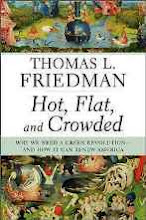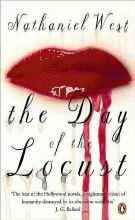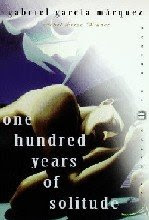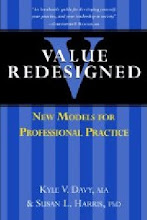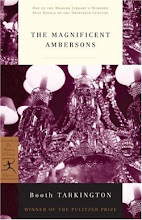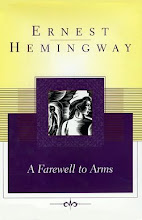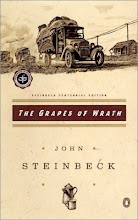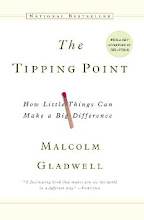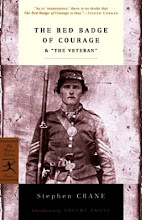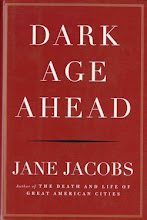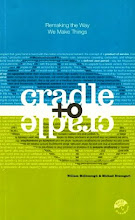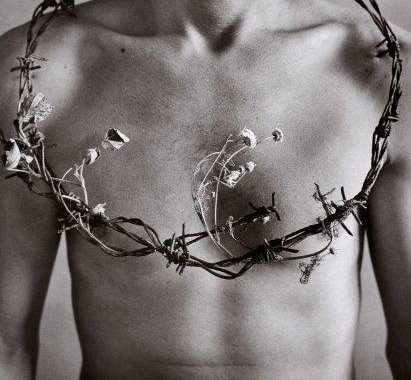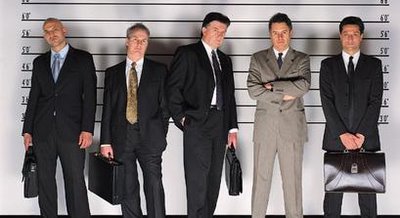
Interviews are the life blood of a design firm. I will participate in about 35 interviews a year as a primary consultant or as a member of a larger team. Preparing for a project interview of significance is highly competitive and heart-rending process that requires an enormous investment of energy and resources. Interviews are the ultimate chess game where all the strings are pulled and heavyweights go head to head.
The process begins with what is called a Request for Qualifications which requires submitting piles of paper justifying your experience for the selection committee. This is fairly standard information - resumes of team members, firm profile, similar project experience, a statement of project approach, project schedule and the list goes on forever. Most firms have this information stockpiled in one format or another. However each selection committee wants the information in a particular format on special forms. This necessitates monumental rewrites on every submission. It’s the professional equivalent of going to the blackboard to rewrite your name five hundred times as a method of punishment. Failing to follow the rules in the exact prescribed manner will result in dismissal from the selection process.
The selection committee will review the ten or more submittals from everyone who followed the rules. Typically there is a contrived system of scoring the submittals which goes like this- up to 20 points for project understanding, up to ten points for relevance of related work experience, up to 15 points for ability of individuals assigned to the project, etc. The committee with the precision of a sledge hammer identifies the top rated firms using a secret formula created by teams of rocket scientists. All of this carefully constructed to make the process fair and unbiased. The system fails when a group of bureaucrats with no formal training is assigned to judge the merits of professional designs. In their eyes a project is successful if it is finished without getting fired and you were able to take a picture of it for the submittal. I like to think of the phase of the process as a group of blindfolded monkeys playing bingo; nobody will ever know the real criteria. And to monkeys “who cares”. Some selection formulas are so complicated that the selection committee locks the door and weight the submittals to determine the ranking. “Hey! I think you got a winner there, that submittal weights 5.2 pounds.”
The carefully ranked list of firms are “short listed” for interviews. Typically the top three to five firms are asked to provide the committee an interview. Many times selection committee and the interview committee may be a totally different group of monkeys. This is where the process gets competitive. Each of the teams begins to work to discover the magic key to unlock the mystery of the interview. Who is on the selection committee? What is their agenda? What do they like? In other words how can I blow smoke up their ass without making them aware of the fact that smoke is being blow up their ass. As you can tell it is a delicate and complicated activity. Fundamentally the key is to achieve a greater volume of undetected smoke than your competitor.
The anointed teams are assembled on a predetermined day to participant in what we term the “beauty contest”. Each team has usually no more than thirty minutes to provide a presentation followed by fifteen to thirty minutes of grilling with questions specifically designed to demonstrate the committee’s ignorance. Teams prepare for the competition with elaborate and complicated presentations which attempt to weave six hundred issues identified by the committee into a powerful and meaningful message. The level of precision choreography requires repeated practice interviews where each team member is critiqued to the point that they are paralyzed by all the input.
After weeks of preparation the team assembles at the appointed time for the “beauty contest”. Let me set the stage. Team of five to seven member each with diverse and specialized training needs to compress twenty years of professional experience into a relevant, crafted message while answering 600 hundred questions posed by the committee, demonstrating positive team dynamics with concise clock management. All to be accomplished in under thirty minutes with more than have your team being engineers. Anyone who has worked with engineers understands, they are the last group in the world you want standing in front of sometime during an interview. Its easier to become a member of the Chinese national acrobatic team with missing one leg and three fingers than it is to get through the interview flawlessly.
In most cases you have only briefly met the interview committee. More often than not you have only spent a few hours with the members of the team you assembled for the interview. Just enough quality time to learn two are on parole, one is a member of the Nazi Party and the other one has an IQ below zero. The team which can complete this choreography with less mistakes and more personality wins the beauty contest.
A recent interview demonstrates how it can all come apart. For this particular interview I was a team member, not the lead firm. We had a brilliant approach. The team was exceptionally talented and qualified. The team had worked with the institution in the past. Everything pointed toward the stars. We were confident. However this selection committee indicated a desire to meet the day to day manager for the lead team. The golden interview rule says that you don’t bring someone to an interview without giving them sometime to say. The lead firm had a young talented project managed assigned to the project named Steve. This was to be Steve’s first project interview.
During the practice interviews we noticed Steve was nervous, unsure and not comfortable with public speaking. As practice interviews continued we began to reduce his speaking role by giving portions of his text to other individuals who were more elegant. By the end Steve’s role was reduced to a brief five sentences which we believe he was capable of committing to memory.
As we waited for the door of the interview room to open I glanced over at Steve. He had a broken into a moderate sweat with two slight sweat circles emerging around his armpits. The other team members are pumping up each other like the jayvee team at a high school pep rally. I call it putting on the “game face”. The chair of the committee opens the door and asks in to the room. The process begins by us setting up the projection equipment and adeptly adjusting the seating configuration. We introduce ourselves to the committee with large genuine smiles and extended hands. Swiftly the team assembles in formation on the precise scripted spots. The lights dim slightly for the projector and the interview starts. The team leader who is called Jack introduces the team in a confident experienced voice exuding the authority of respected college professor. We are out of the gate with a strong start. Jack has all the style and polish of an interview veteran. He has mastered the art making people immediately like you.
The team is working like a well oiled machine. The first hand off is graceful and comfortable. The interview committee is spellbound. Reminding me of a sheep dog the next speaker skillfully moves the committee to where he wants like a herd of sheep. Just at the right moment he managed to answer six separate questions with one sentence. The committee gasps as if he had just nailed a triple loop jump on the ice. While maintaining eye contact with the committee I glance at Steve. He looks ill. His complexion is a pale white and the two sweat rings on his shirt have enlarged to the size of basketballs. Steve is more rigid than four day old road kill. I attempt to comfort him by leaning over and whispering in his ear how well this interview is going. He quietly admits his nervousness with a vacant stare.
It’s my turn. Another brilliant transition between speakers occurs with a warm friendly quip that indicates our deep respect and committed friendship for each other. That move ought to get the team at least four of the five points for team dynamics. We’re on a scoring blitz. The committee is franticly scribbling notes. I’ve come to realize if they are not taking notes, they are not listening to the message. I slow the tempo for dramatic effect. The words come easily after years of perfecting this stump speech, like sliding into a worn pair of shoes. I approach the committee to address each member with a targeted message and sustained eye contact. Their heads are nodding up and down like bobbers on a fishing pond. I notice an opportunity, a break in the cold façade that can be breached. It is the point we all dream about in interviews, the moment of truth when the intentions of the committee become obvious. I glance over at my team members, they see it to. I probe the issue deeper to gauge the extent of the weakness. Out of the corner of my eye Jack flashes me a subtle signal to make the move. I quickly and smoothly shift the conversation to the apparent insecurity of the selection committee with our competitors. They are caught off guard and embarrassed that their deepest fears are revealed, exposed to scrutiny. We are the doctor, we are here to help. It’s okay.
I’m in the zone. I see the magic key which unlocks the mystery of this committee. It’s a weakness in the other teams. The breach is exploited quickly. I set the premise. I define its importance. I explain the process. Then I built the conclusion. Finally with the verbal dexterity of a power hitter I pull for the fences. Homerun! The team leader slightly leans back with a small grin which says “that’s why we put this boy on the team”. While the committee marvels at the length of the blast, I wait quietly in silence. The golden rule is to never over sell. When you end up saying something so brilliant that it can’t be topped, don’t try to top it. It’s time for me to shut it down and send up the next speaker Steve.
I provide a sincere gracious introduction to the young professional clearing the way for his five sentence scripted proclamation. As Steve stands his legs are stiff like he is walking on stilts. He is so white he begins to blend into his pressed shirt. The two sweat circles are now the size of beach balls which are running into each other under his tie. He painfully squeaks out the first sentence with all of the tonal control of a teenager in puberty. The committee has stopped taking notes and begins to take notice of Steve.
The second sentence begins but is so jumbled in the process it is incomprehensible. With disbelief I listen to him attempt the second sentence again. He looks feeble and confused. I’ve seen people who have undergone six months of chemotherapy with more color than Steve. I don’t have a good feeling about this. The team members lean over and stare at Steve like that’s going to prop him up long enough for his to expel his five sentences. Then like I was watching some bad movie he begins to talk in gibberish. Not like one or two words were transposed and you could sort of guess the meaning of the sentence. This was absolute, no oxygen to the brain, the party is over, turn out the lights gibberish. We have all seen the devoutly religious on the television talking in tongues. Only god knows what Steve was trying to say. The committee members began looking at each other to make sure they weren’t going crazy.
As Steve continued speaking in tongues he began to develop a sway. It started out as if he was standing on a ship at sea. Quickly it grew into a southern pine in a stiff breeze. After the third revolution it was apparent he was going down for the count. The committee members jumped up to assist but were pinned in behind tables. Jack and I leaped to Steve’s side and grabbed both arms as he collapsed.
Placing Steve back into his chair, a couple of the committee member rushed out the door to get some water. It took us about five minutes to partially revive Steve. Showing great concern the committee watched him drink some water. We all stood silence staring at Steve like he was the prize bull at the auction. When it became apparent that Steve was not going to die or require medical assistance we were asked to complete our interview. Slightly rattled Jack picked up where Steve literally dropped off. In a valiant effort the interview proceeded, but Steve not fully recovered slumped quietly moaned and mumbled in the background distracting the committee. We concluded the formal presentation and proceeded with an unspectacular question and answer session. Most of the committee members distracted by the slumped lifeless body of Steve moaning in his seat really did not want to engage the team with any further questions.
We swiftly concluded the interview by thanking the committee, packing up the equipment and carrying Steve out between the two of us like a sack of potatoes. The competitive spirit always burns between interview teams. As we left the room we had to walk past the next team waiting to be interviewed. Shocked and horrified at the image of us dragging a moaning Steve out of the room, they looked to our team leader with wide eyes and gaped mouths. As cool as cucumber he smiled and said “Boys you better watch out that’s a tough crowd in there”, then turned for the door. Needless to say a few days later to nobody’s surprise the committee decided to hire a Steve-less team for the project.













